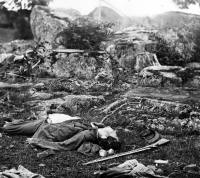I grew up reading Laura Ingalls Wilder’s books and credit them with leading me to become the history buff I am now. Everyday life in our nation’s early days intrigued me.
But the sensibilities in the days those books were published left a few gaps. We saw Pa dig a well and build a log cabin in LITTLE HOUSE ON THE PRAIRIE, but we are left to assume that he also dug a pit and built an outhouse. And what about the chamber pot during THE LONG WINTER? How often was it emptied? Pa’s trips to feed the livestock likely included this smelly chore.
Lois Miner Huey’s book, ICK! YUCK! EEW! Our Gross American History, takes the mystery from those early days. She guides her readers back to the days just before the American Revolution and fills in the gaps. From lice and bedbugs to chamber pots and privies, she lets us in on all the dirt—and germs and poop.
I recently interviewed Lois, who is an archaeologist, a non-fiction writer, and a friend.
| Archaeologist and Author Lois Miner Huey |
Lois: While excavating in the yards of many historic houses open to the public, I’d see the early occupation layers littered with trash. I’d look around at my surroundings to see lovely green lawns, interpreters dressed in spanking-clean costumes, and visitors wishing they could go back in time.
I knew the people who run historic sites can’t wear dirty clothes, have pigs running around threatening visitors, or have ground surfaces littered with broken glass, dishes, and oyster shells! People wouldn’t want to visit that kind of place. So I decided to present the real picture in a book.
 |
| Dead at The Devil's Den, Battle of Gettysburg |
Lois: I admire how people then coped with all the problems of daily life. I couldn’t. I especially think of the brave souls who were willing to have smallpox placed inside their skin so they’d come down with it—but hopefully in a lesser form. It takes guts to do something that new and not well tested.
| Man with smallpox |
Lois: The 18th and early 19th centuries were very bawdy eras. I couldn’t deal with that in a kids’ book. It’s interesting to note that the straight-laced Victorian era was a reaction to all this promiscuity. I should also mention that although not “juicy,” slavery was a big part of daily life. It is such a big topic that I couldn’t deal with it with the kind of fairness it deserves in this book. However, my next book with Lerner deals with slavery in the North and what the study of skeletons in three burial grounds tells us about their lives.
Kathy: What kind of challenges did you face with a “picture book” intended for older kids?
 |
| The Tavern Scene from A Rake's Progress by William Hogarth (1732-34) |
Kathy: What question that I didn’t ask do you feel the need to answer?
Lois: Some of the research I found points out that our modern times are perhaps over-reacting to the existence of germs and dirt. It would be ironic to have our way of life end because we’re too clean!
 |
| http://www.dailymail.co.uk/femail/article-2546903/Where-hidden-germs-home-From-coffee-pot-remote-control-surprising-places-bacteria-linger-weeks.html |
***
Thanks, Lois, for sharing your thoughts on this interesting topic. I can’t wait for your next book.



